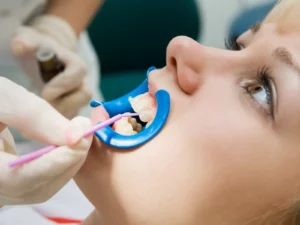Fluoridation Weekly Review #21
Fluoride Overdosing Reported In Lancaster, Pennsylvania

Customers of the Lancaster, PA water system received 2.3 mg per liter fluoride in their water in late December, according to a report February 3 on LancasterOnline. The concentration is nearly four times the recommended concentration.
The report did not indicate the duration of the overfeed, but did note that the excess level exceeded the 2.0 mg per liter level that requires notification under federal and Pennsylvania requirements. The reporter garbled the information, mistakenly referring to what is technically called the “maximum contaminant level goal” as a “mandate.”
“In late December, the Lancaster Bureau of Water learned it had violated the Pennsylvania drinking water standard for fluoride after testing found its system’s drinking water contained .31 milligrams per liter more than the mandated 2.0 mg/L. The violation prompted the city to begin daily fluoride tests, the letter said, and fluoride levels have met the standard since then,” read the report.
“Elevated fluoride levels affected customers in the city, as well as parts of East Lampeter, West Lampeter, Manheim, Lancaster, Manor, East Hempfield and West Hempfield townships and Millersville Borough,” according to the report.
The water system notified consumers a month after the overdosing occurred, a relatively timely response as federal regulation allows up to a year to notify those exposed.
Dentistry Concerned Over Growing “Fluoride Hesitancy”

Reflecting a concern over the general public’s unwillingness to use fluoride in dental health, researchers from the University of Washington and other schools have tried to develop “a reliable and valid way to measure topical fluoride hesitancy.”
In a recent paper in The Journal of Public Health Dentistry the authors note, “Despite the demonstrated efficacy and safety of fluoride, hesitancy regarding fluoride treatment and refusal of this treatment among childrens’ caregivers has become more common. In a survey administered to 582 dentists, a majority (89.6%) believed fluoride hesitancy was a growing problem in their practice; and 37% reported feeling uncomfortable talking to fluoride hesitant caregivers.”
The researchers, who interviewed English-speaking caregivers only, identified 32 aspects of the fluoride hesitancy question in five categories:
1) “Believing it is harmful to my child, 2) Feeling like there is too much uncertainty, 3) Feeling pressured to get fluoride, 4) Keeping chemicals out of my child’s body, and 5) Thinking it is not necessary.”
The purpose of the work is to “use this information to develop and test tailor-made interventions directed to caregivers with varied types and levels of topical fluoride hesitancy, to ultimately improve child oral health,” conclude the authors.
Source: https://doi.org/10.1111/jphd.12558
Lichen Proposed As Indicator Of Fluoride air Pollution

The lichen Xanthoria parietina is highly sensitive to fluoride exposure, making it a promising indicator of this type of air pollution, according to a group of Algerian microbiologists writing in the current issue of the Journal of Applied Biological Sciences.
“Lichens present a very important model of symbiotic organisms associating a mushroom called mycobiont and green algae and/or cyanobacteria called photobiont, one of its main uses is the use as bioindicators of air quality,” explain the authors.
“Stressful conditions caused several biochemical and physiological changes in the plants. The most commonly used parameters to study the toxicity of atmospheric pollutants on lichens are chlorophyll degradation and lipid peroxidation,” they note.
In exposing the lichens to sodium fluoride and lead nitrate they found both compounds caused these and other adverse effects to the plants, with lead inducing greater negative responses than fluoride.
“Despite the fact that lead was more toxic than fluoride, X. parietina has a very high sensitivity to fluoride. We were able to draw the conclusion that fluoride must be classified among the most toxic air pollutants, and therefore to open the field to other works to study and compare the toxicity of fluorine with that of heavy metals on the various other ecosystems,” concluded the authors.
Source: https://www.jabsonline.org/index.php/jabs/article/view/1099
Toronto Petition To Repeal Fluoridation Still Active

An online petition to repeal water fluoridation in Toronto is still active, and has collected over 7,600 signatures on a petition to the Toronto City Council.
While the petition by End Fluoride Toronto was started 10 years ago, it is still active and attracting signatories, a blog site that opposes the petition posted Feb. 2
As noted by the blog author, who ironically seems to link KPMG to the repeal effort,
“Consider eliminating fluoridation of Toronto water,” was listed as an opportunity for saving money in a 2012 report by KPMG on options the city had to reduce its $774 million city budget shortfall that year,
Sources:
https://www.blogto.com/city/2023/02/fighting-remove-fluoride-toronto-water/
https://www.change.org/p/toronto-city-council-stop-artificially-fluoridating-toronto-s-tap-water
•• Michael Dolan can be contacted at <mdolan.ecsn@outlook.com>
•• The archives of The Fluoridation Review are available at: https://
No comments:
Post a Comment